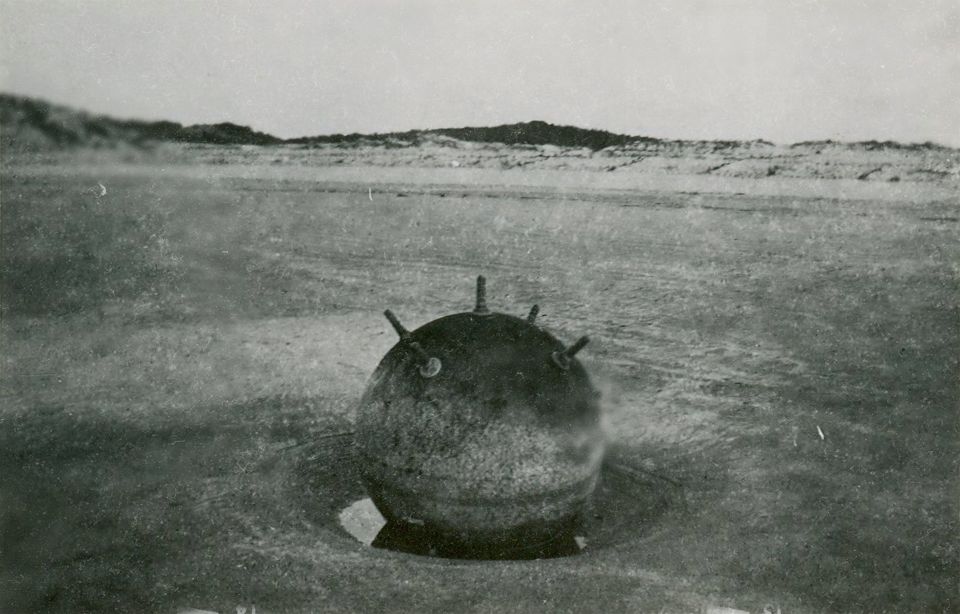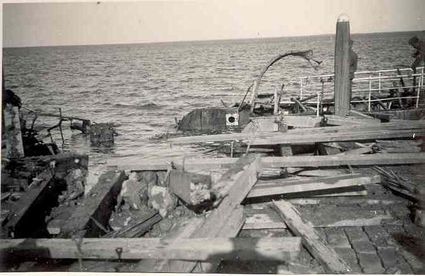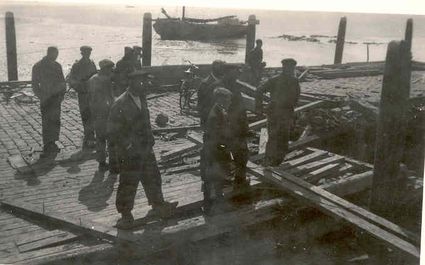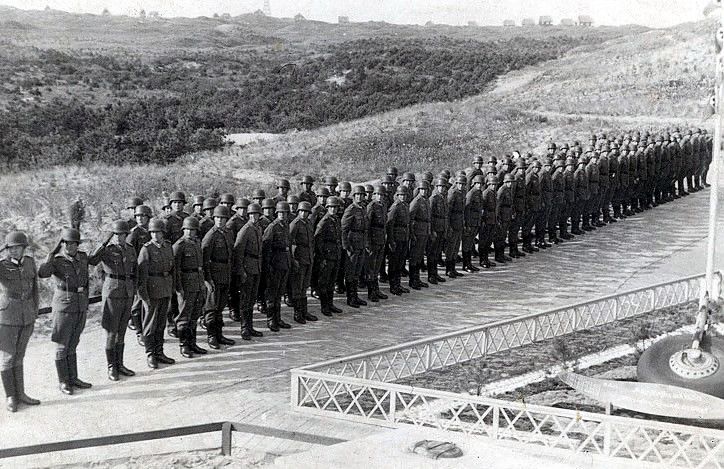Ameland during the war years
Reading time: 6+ minutes
The day the Germans invaded the Netherlands, Ameland had little to fear from the violence of war. The exact date of the takeover is unknown, but it was before 17 May1940. On this date, around sixty Dutch military men who had been stationed on Ameland arrived in Leeuwarden. The Germans had forced them to leave the island. The takeover was peaceful, according to the documentation and photo albums.
German and Dutch military men pose friendly for a photo at the end of Strandweg in Nes. Beach pavilions Scheltema and Steinvoorte are still just visible.
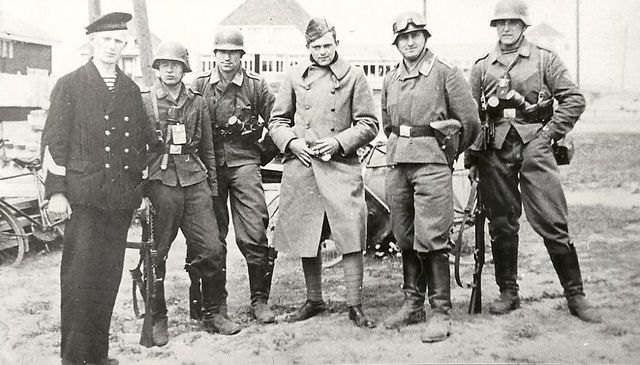
After surrendering
There were no noteworthy incidents in the days after the surrender, and the first holidaymakers appeared quickly on the island again. Ameland was safer than anywhere else in the Netherlands, wrote Baptist minister W. Banga in the Leeuwarder Courant. He took a short holiday there, heard planes flying over occasionally and saw how washed up naval mines were defused, but otherwise he was able to enjoy the rest.
Naval mines frequently washed up on the beaches of Ameland where experts defused them.
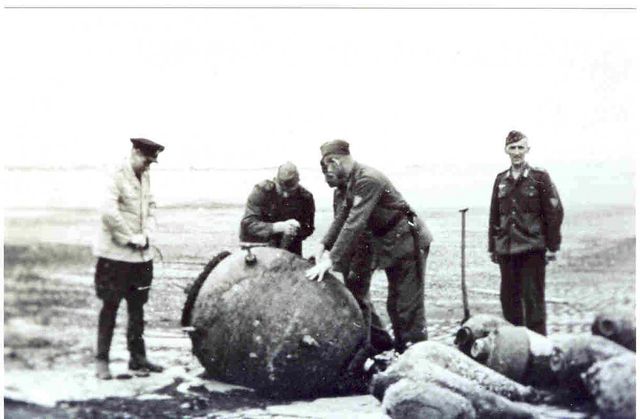
From 31 May, a British air raid practically destroyed the ‘Ameland’ ferry moored in Nes, making travel to the island difficult for holidaymakers. And the pier itself
suffered extensive damage. By the end of August, transportation was limited to military personnel and government officials. Without anAusweis (identification card), it was no longer possible to visit or leave the island.
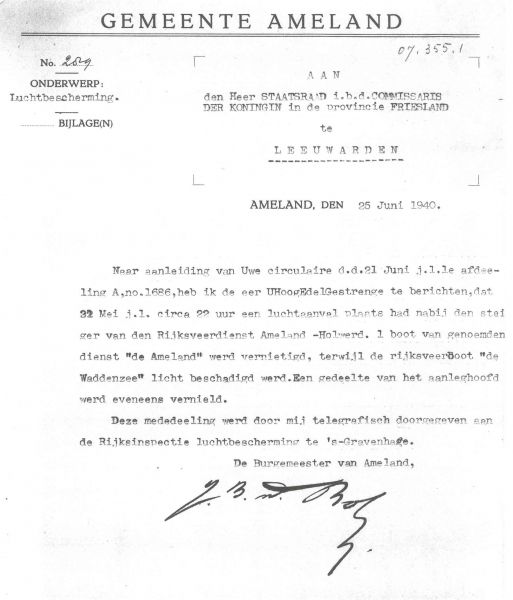
Coast and air defence
That Ameland, just like the other Wadden islands, was strategically important, became very clear early on in the war years with the arrival of the German marines. They manned the bunkers that had been built on Ameland during the war and meant to defend the coast and air space.
The largest fortification was built on the western point of the island near Hollum. The living quarters that were built by this so-called Flak battery were so comfortable that they were used as a youth hostel long after the war.
The Germans used these, for the time, very advanced binoculars to keep a close eye on the coastline from the Flak fortification near Hollum. The lighthouse guards on Ameland enjoyed these for many years after the war.
German soldiers were standing at the ready everywhere, also at this bunker in the dunes near Bure Blinkert.
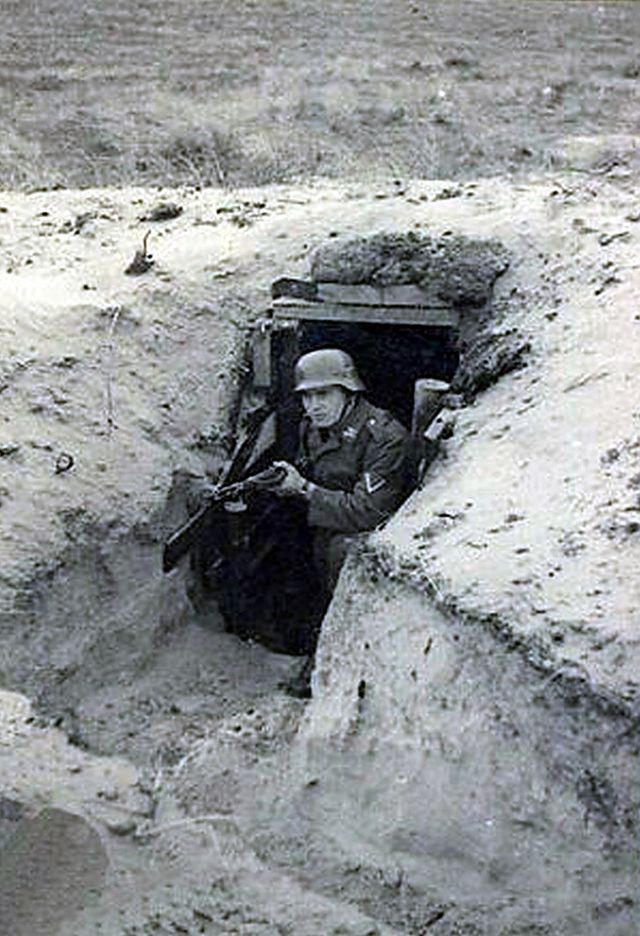
War graves on Ameland
Just like on the other Wadden islands, radar equipment was installed on Ameland. Though it did not play as important a role as the radar stations on Terschelling and Schiermonnikoog, which were the cause of many losses among the Allied Forces. But Ameland was also frequently confronted with battles in the air and at sea. The number of crashes on the island itself was limited, but many people lost their lives near Ameland. Especially after the Battle of Dunkirk, the bodies of many English and French military men washed up on the beaches of Ameland.
After the Battle of Dunkirk (27 May-4 June 1940), bodies of fallen military men washed up all along the Dutch coast, including the beaches of Ameland.
The occupation
During the years of occupation, everyone on Ameland, both the residents and the Germans, did their best to make the situation bearable. Military activities were limited throughout the whole of the Netherlands, and Ameland was no exception. There was enough time for recreation and interactions between the island's residents and the German military men.
GEnough time for recreation and interactions, such as between these children in Nes and the German soldier on horseback, in July 1941.
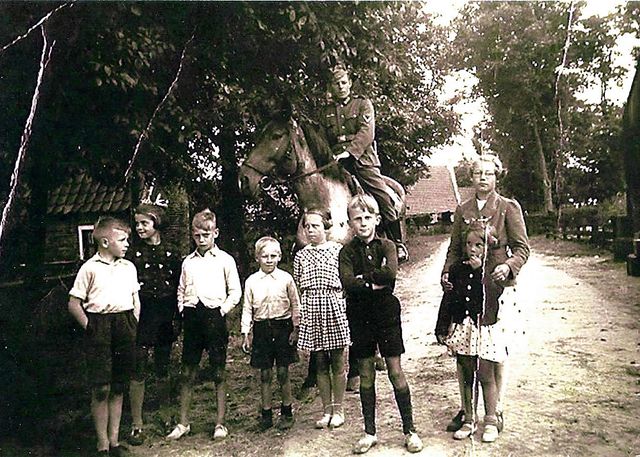
German soldiers discovered the charm of Ameland and spent leisure time on the beach between Nes and Buren.
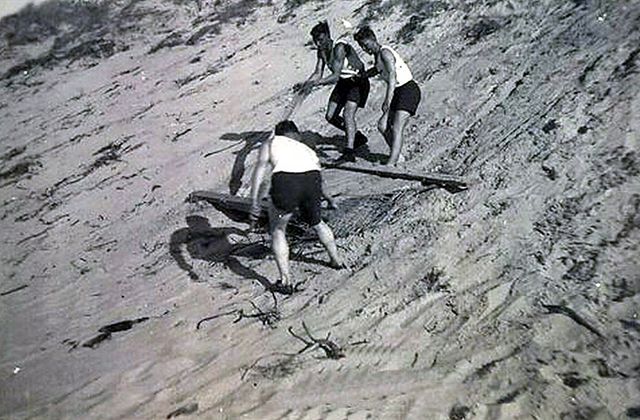
Residents and occupiers agreed on ‘keeping the peace’ on Ameland. Drinking together on the terrace at Hotel de Boer, later known as Hotel de Jong, was a common occurrence.

Fatal incident
Did nothing at all happen? Yes, it did. In 1941, a tragic incident occurred that was in stark contrast to the otherwise peaceful everyday life. Minne Keestra, born and raised on Ameland, told everyone who wanted to listen about the rumours he heard on Radio Oranje. A German soldier wanted to know where he got the information. Keestra refused to tell him because Radio Oranje was forbidden.
The soldier threatened to shoot him, but Keestra continued to refuse and ended up paying with his life. The island was in shock, this was exactly what everyone had been trying to avoid the whole time. The soldier was exiled from the island and sent to the infamous Eastern Front. This proved even more just how much the Germans wanted to 'keep the peace'.
The fallen Amelanders
In addition to the cruel death of Minne Keestra, Ameland lost more (former) residents to the war. Many men spent large parts of the war at sea, which caused a great deal of worry on the home front. A total of sixteen sailors from the island lost their lives. Among them were Jan J. van den Brink from Nes, who perished during the battles at sea in May of 1940, and Jacob Vink, a sailor on the warship ‘De Ruyter’ during the Battle of the Java Sea.
Collaboration and resistance
It was known that several Ameland residents were members of the NSB. Mayor Bouk Bakker, who was not originally from the island, was one of them. He held office from 1942 to 1945 and, although he was not well-liked by the residents, he was appreciated for the fact that he did his best to save as many of the Amelanders as he could from forced labour. After the liberation, he was arrested and sent to an internment camp in Leeuwarden.
Resistance work
The resistance was at work here and there on the island. This was possible because there was still sufficient freedom of movement outside of the barred zone. The underground resistance mainly provided a hiding place for the persecuted, including a young Jewish girl from Amsterdam. Information was also collected and passed on to the resistance groups on the mainland.
Disobedient beurtskippers
It is quite well known that the beurtskippers (Dutch inland shipping) from Ameland, who ran a weekly service from Ballumerbocht to Harlingen, paid little attention to the occupiers' rules. Especially Cor and Hans de Bruin and Gooi Visser, who never missed a chance to pull the wool over the Germans' eyes. Not only were clandestine butchered pigs brought to the other side, which was against the distribution regulations, but even weapons were smuggled to the island. They hardly gave it a second thought that their own lives hung in the balance.
Liberation
The Amelanders saw the Dutch flag waving on top of the tower in Holwerd, on the other side, while their island was still occupied. But the German military watched sympathetically as people began to celebrate, albeit rather carefully. According to eyewitnesses, the Germans and the celebrating Amelanders all mingled together. The German military men only wanted one thing: to go home as quickly as possible.
However, they did not want to be disarmed by the Nederlandse Binnenlandse Strijdkrachten (NBS) that was now present on the island. The NBS, called a 'bunch of misfits' by many Amelanders, took control of civil authority on 11 May as ordered by the allied supreme command. On 3 June, the Allied Forces arrived and the German troops left the island, sailing via Terschelling to Bremen harbour.
On 3 June, the German soldiers said goodbye to Ameland. The cook for III Batterie 246, a certain Bomers, did that in this unique way.

With the arrival of the binnenlandse strijdkrachten (NBS), on the Veerdam by Nes, Ameland was officially liberated.
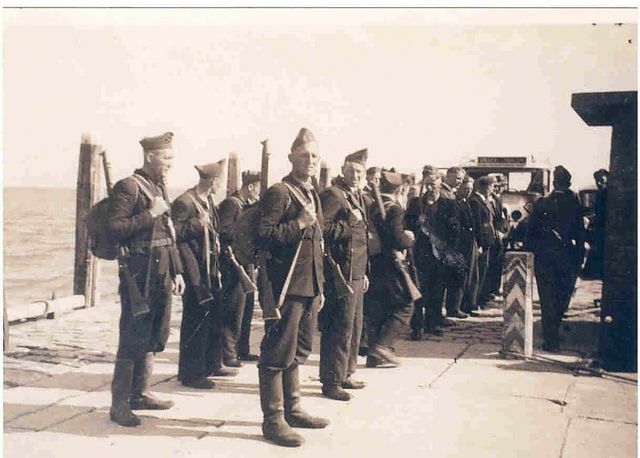
Most of the bunkers on Ameland have disappeared. Some of them were destroyed, but on the western side of the island in particular, the bunkers disappeared under the sand. The battery's mess bunker is now home to the bunker museum.
Visit Ameland
